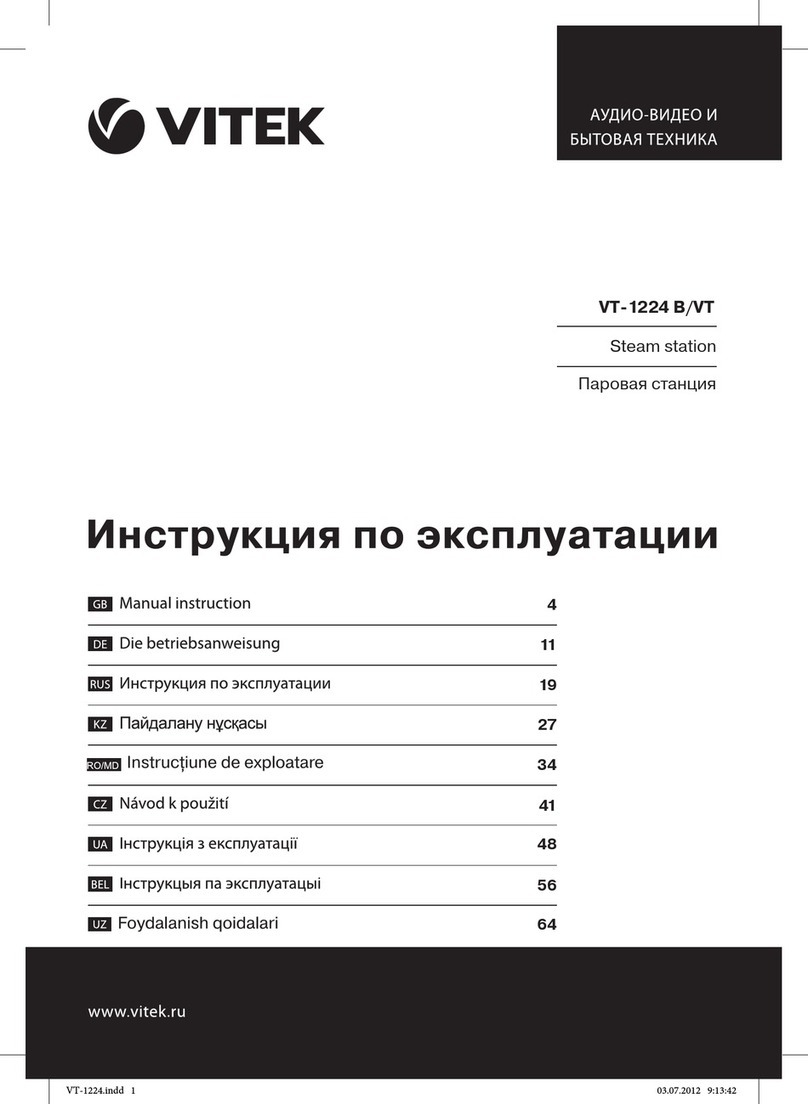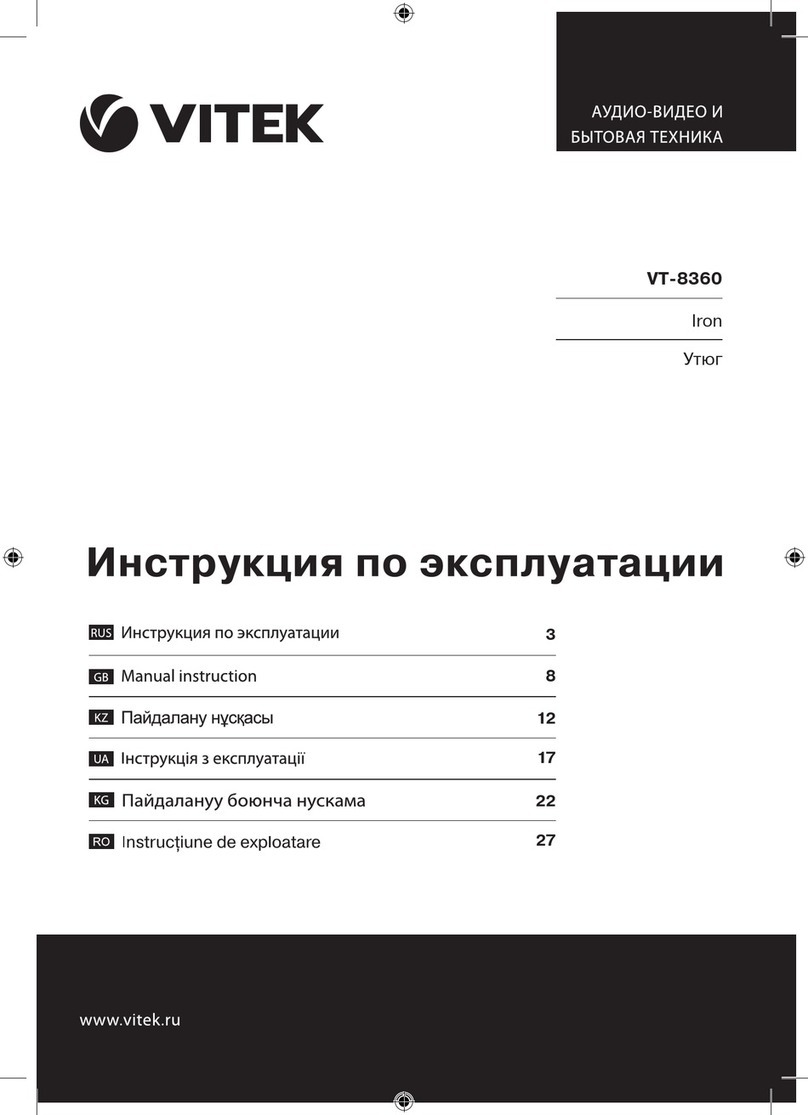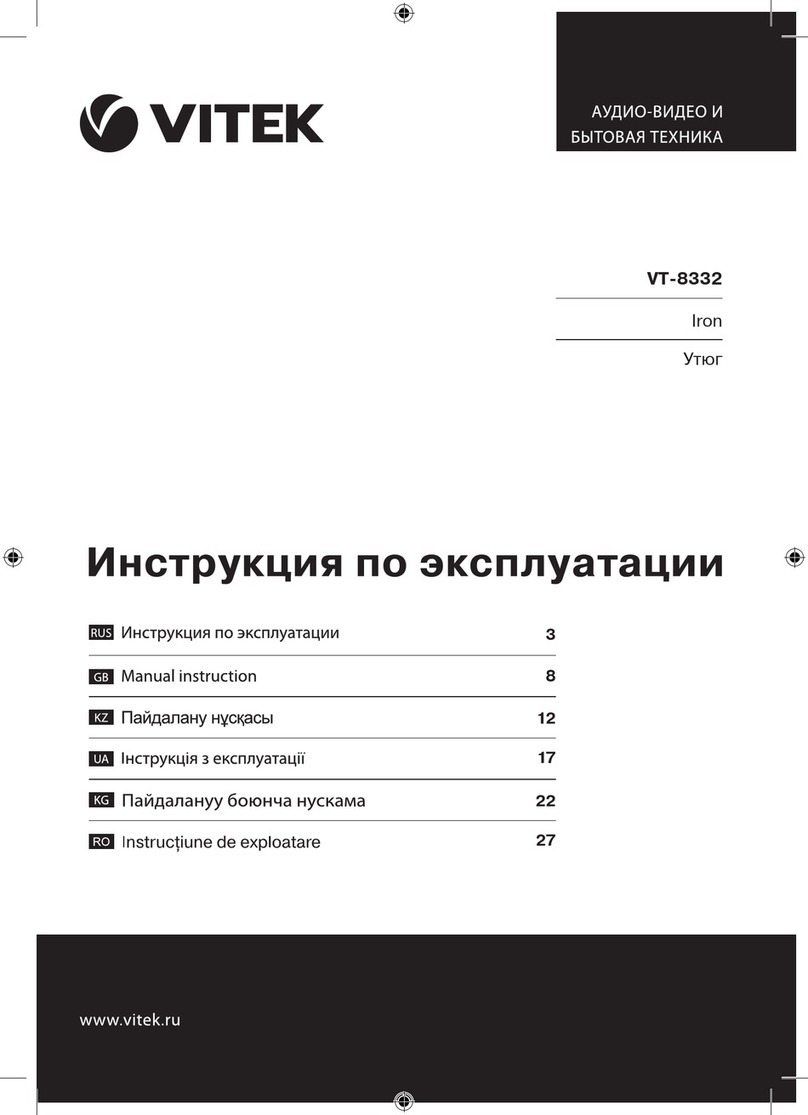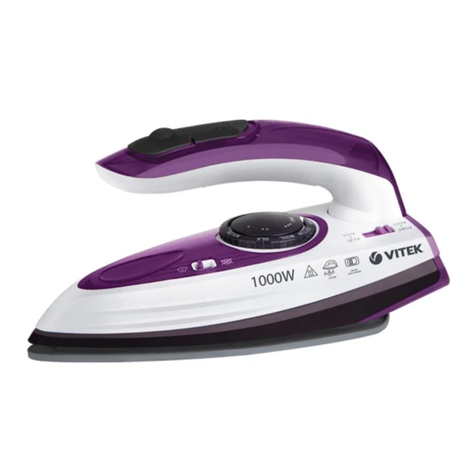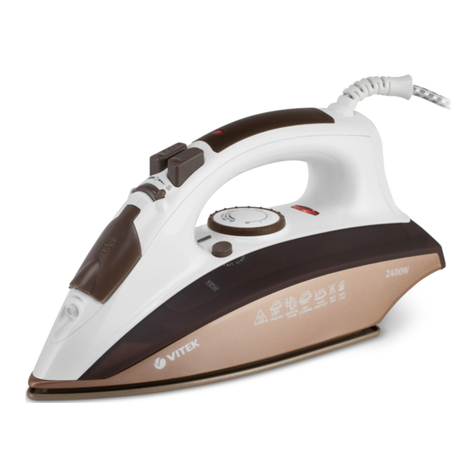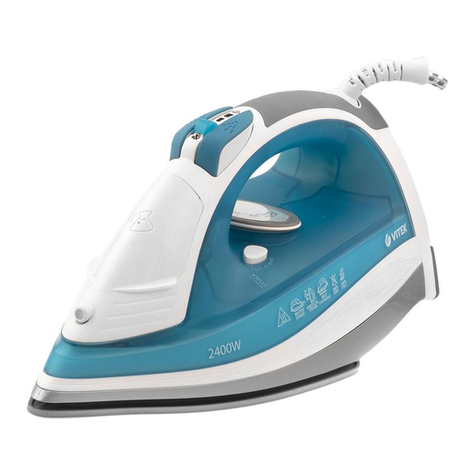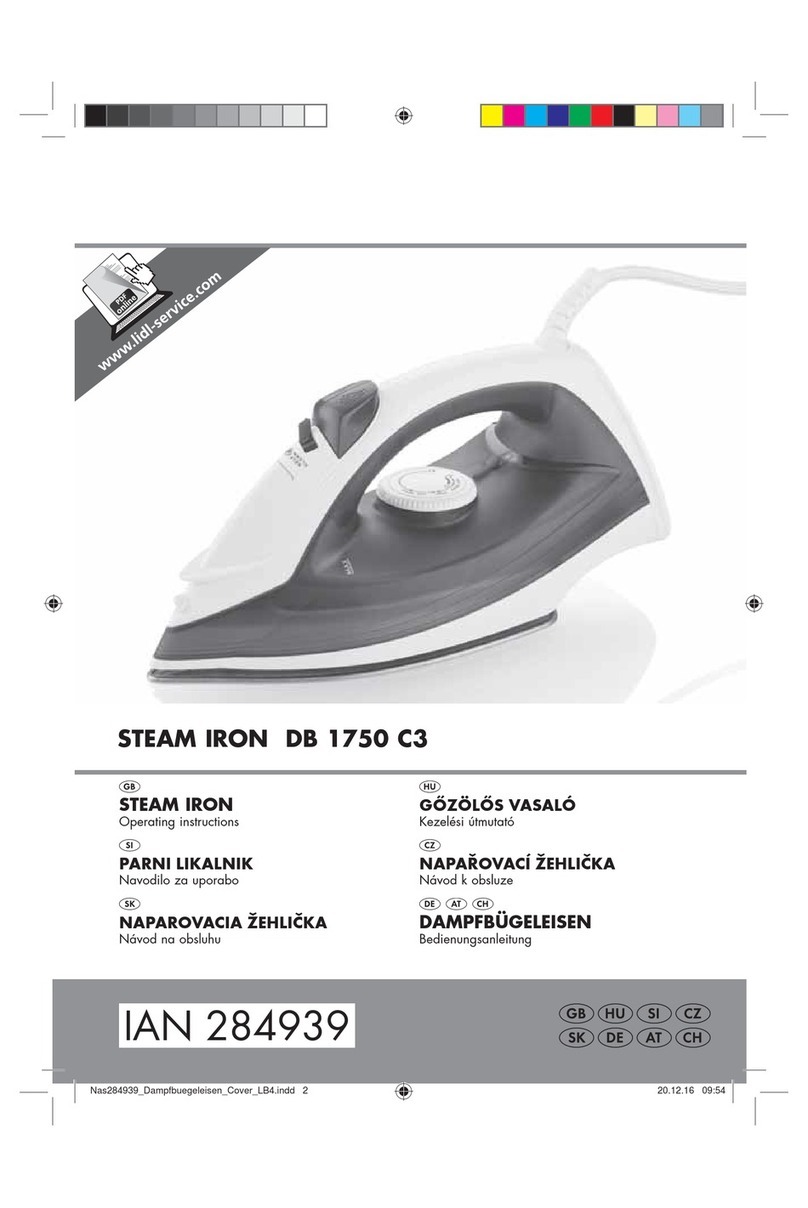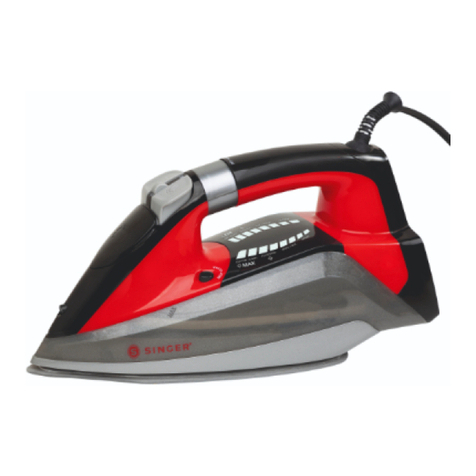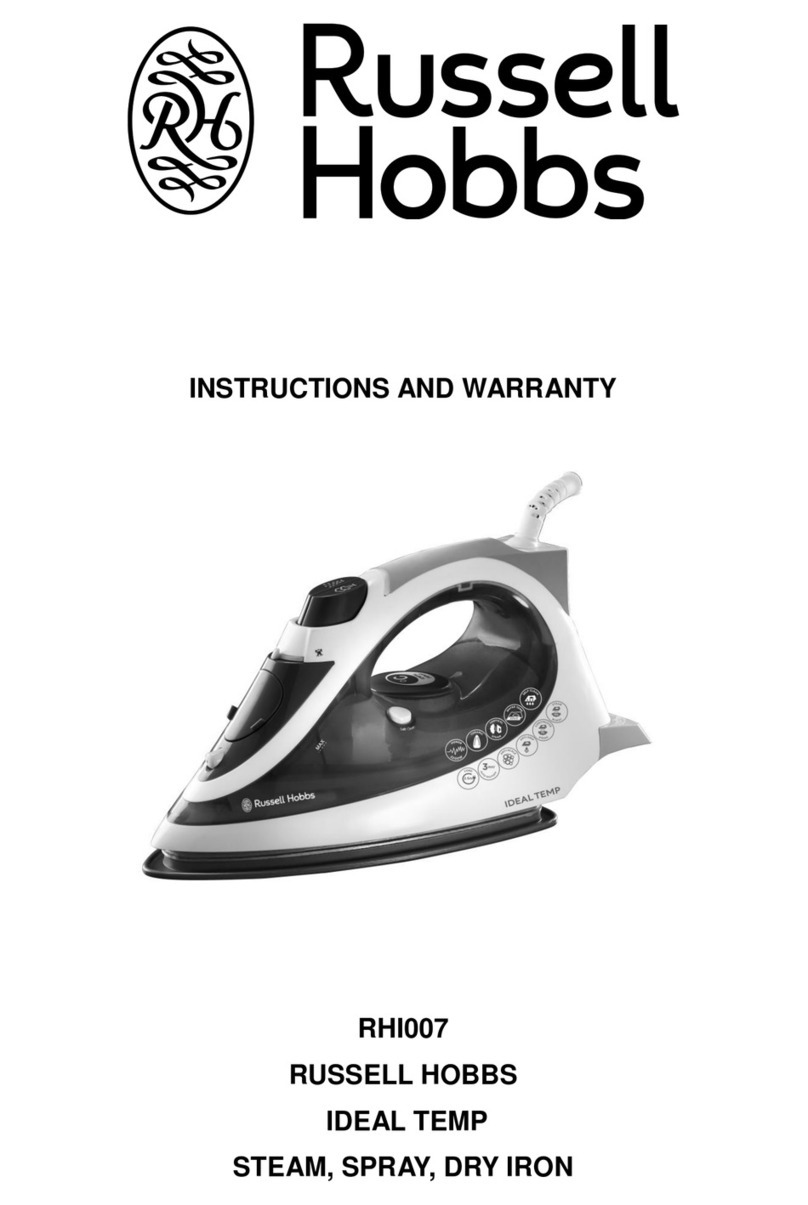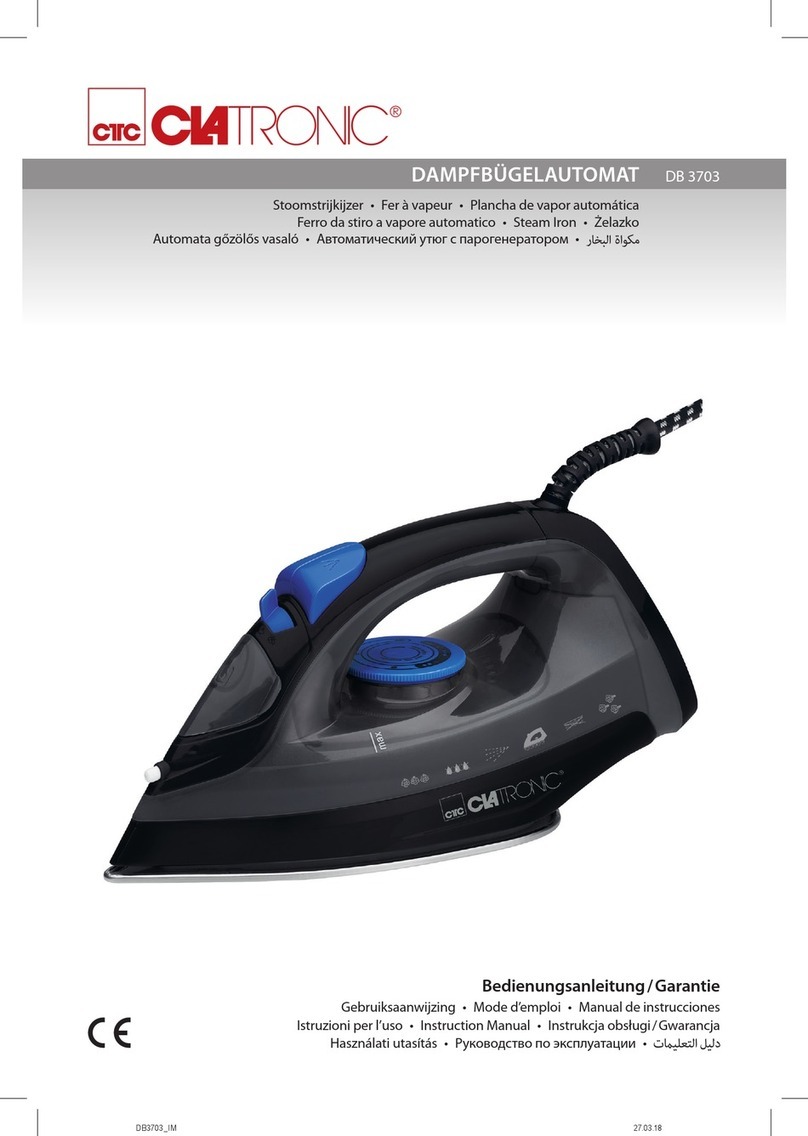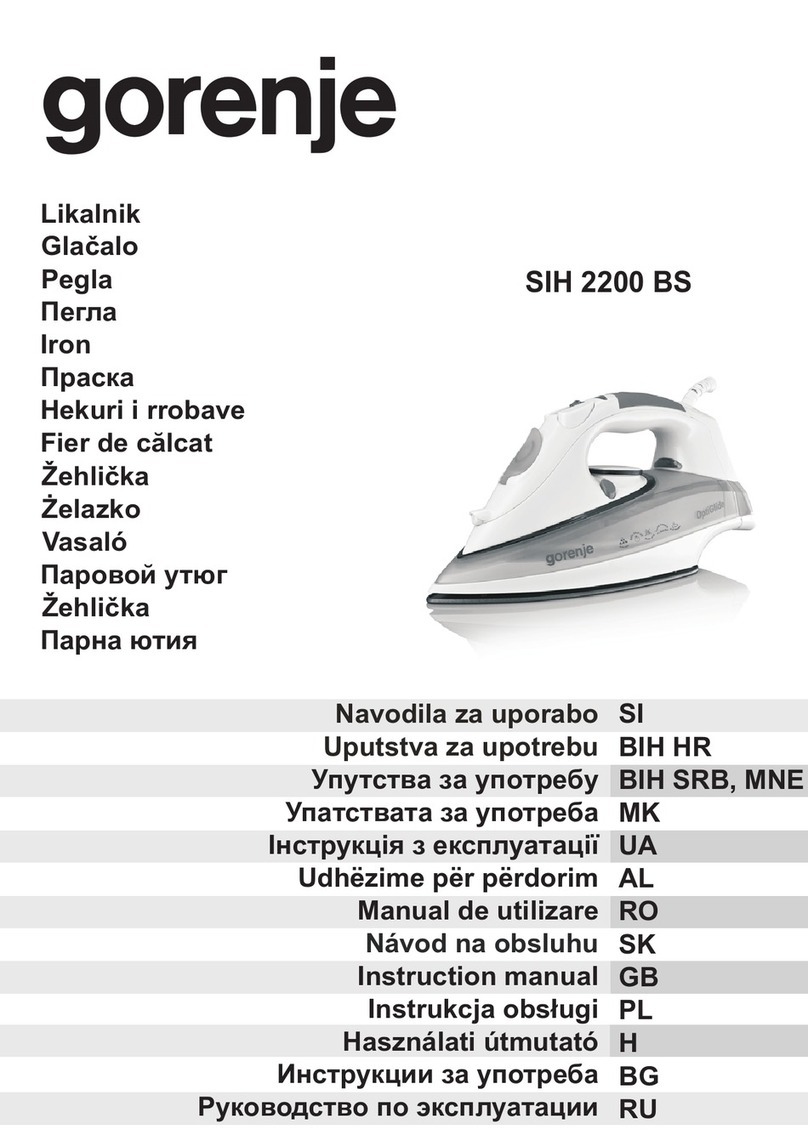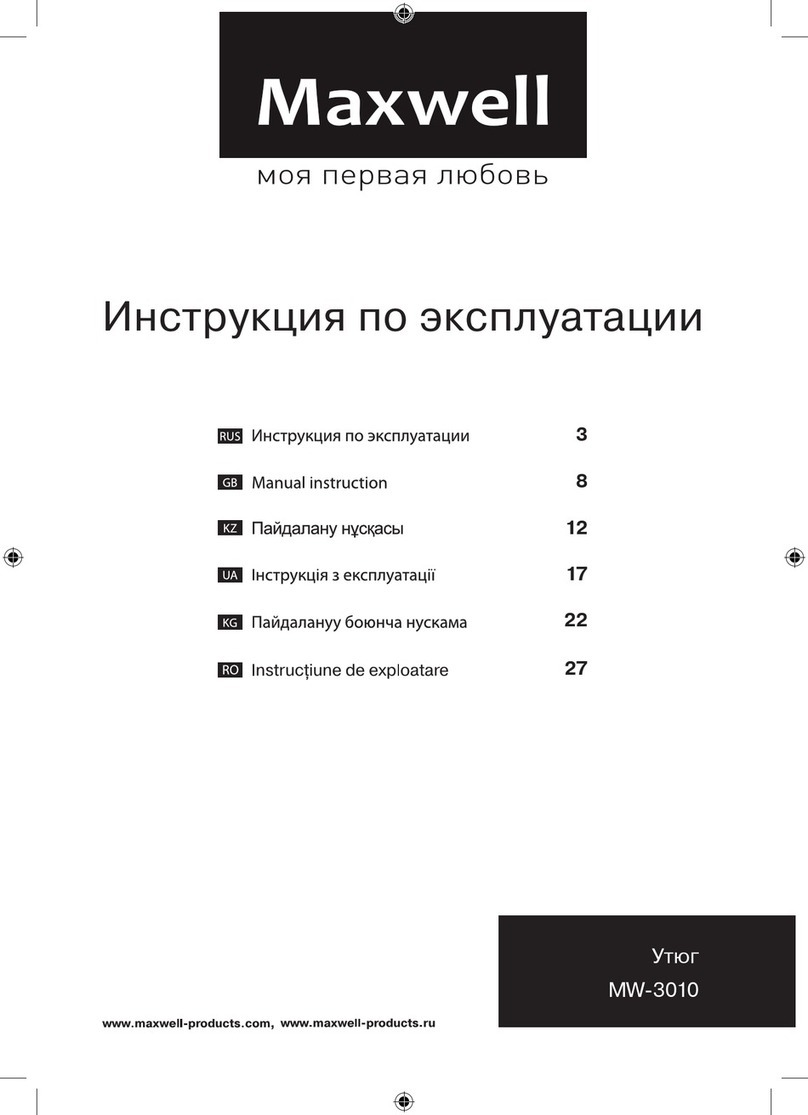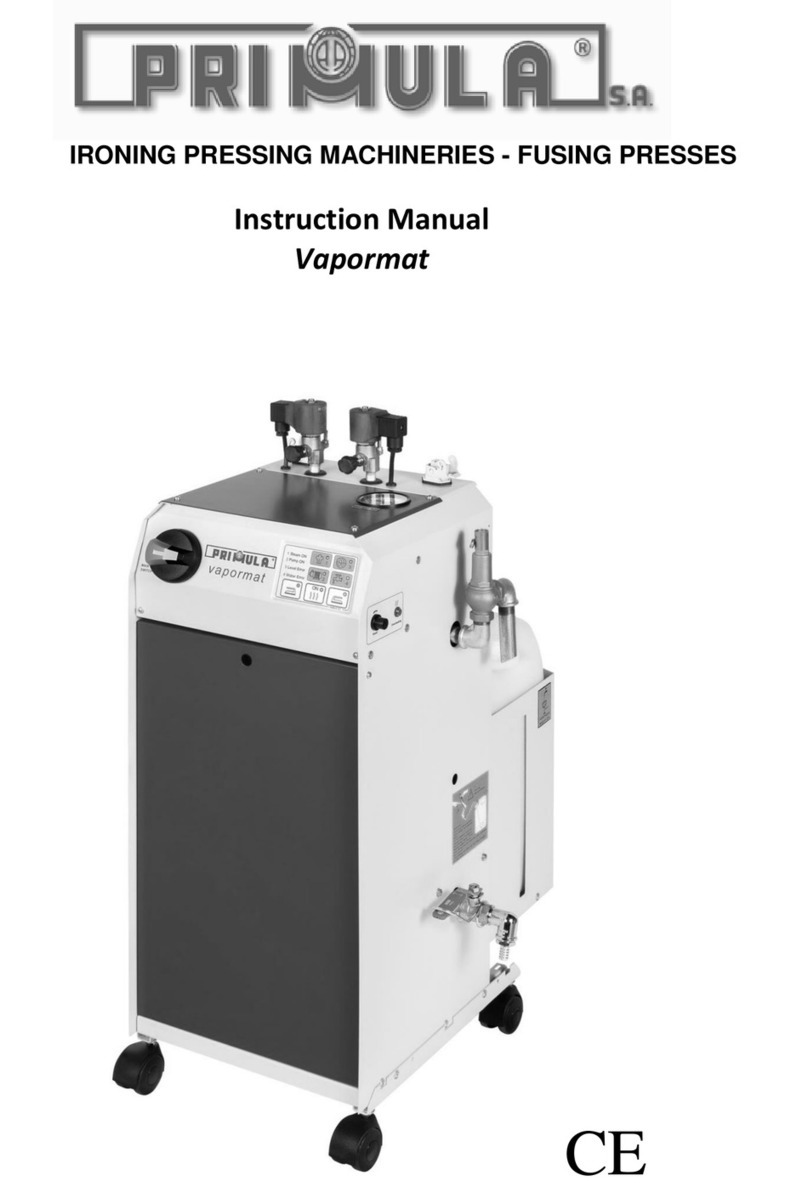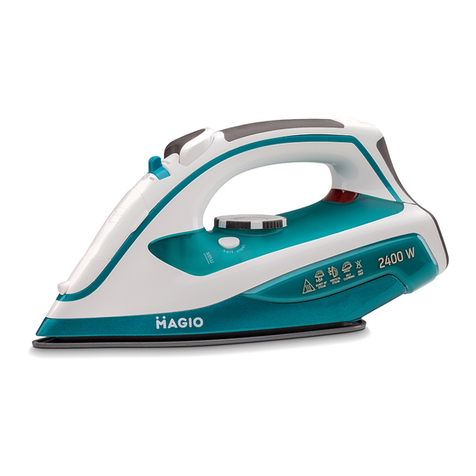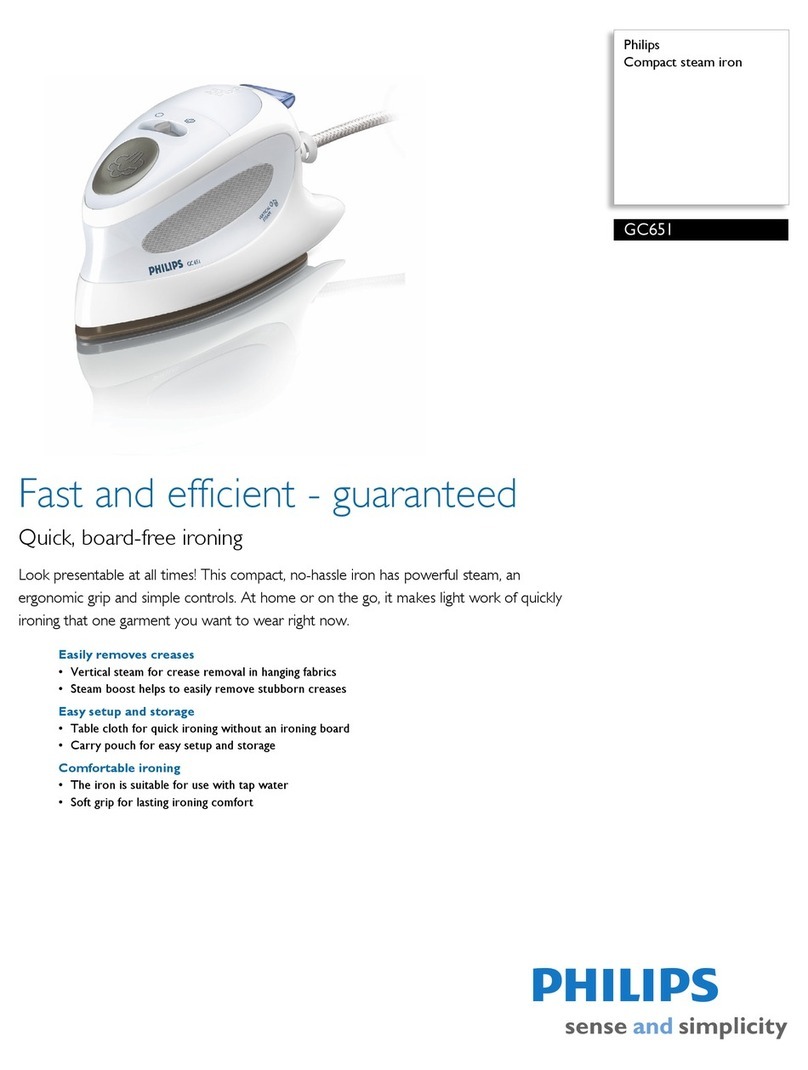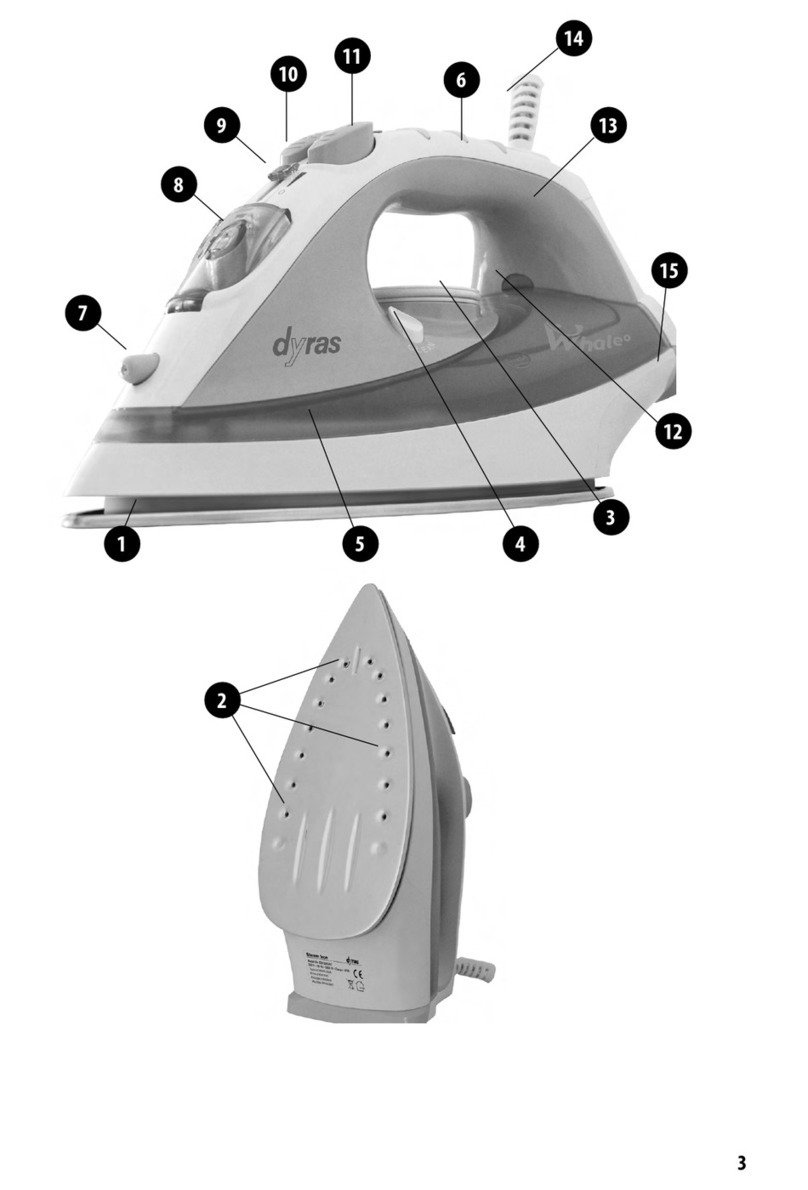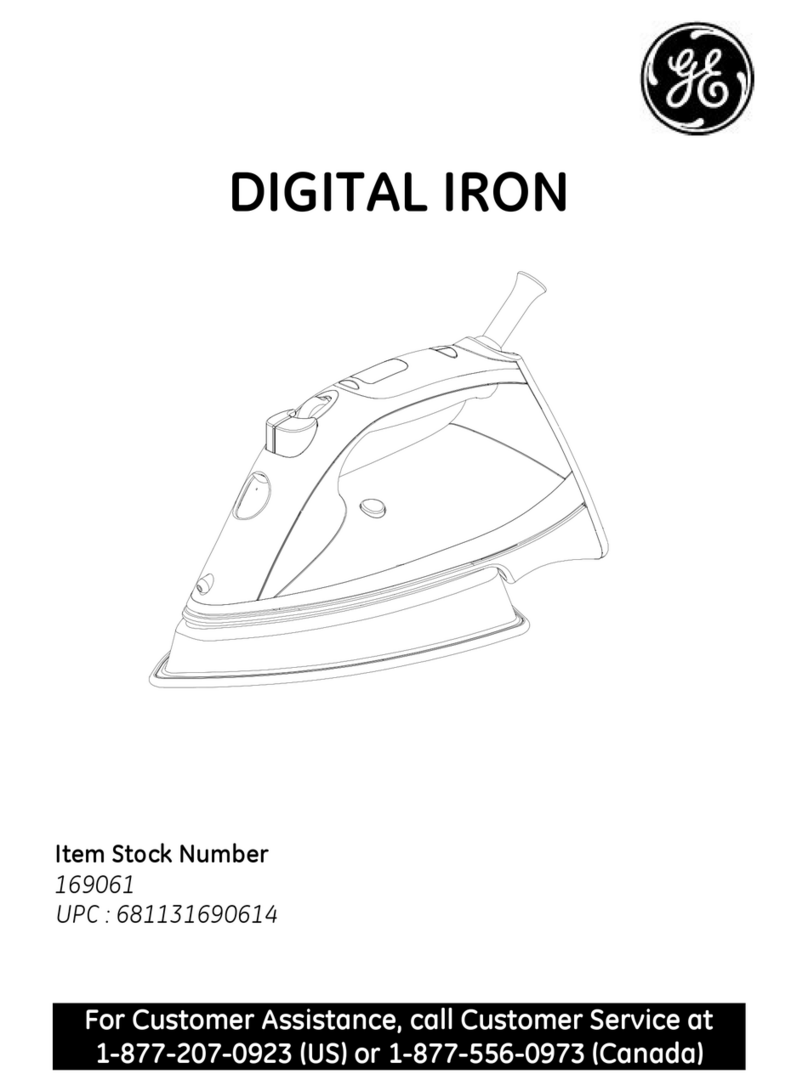
6
•If an item is made of mixed fabrics, the iron
should be set to the lowest temperature (for
instance, if an item is 60% polyester and 40%
cotton, it should be ironed at temperature
used for polyester ironing «•»).
•If you cannot define the fabric structure, find
a place that is inconspicuous while wearing
and select the ironing temperature experi-
mentally (always start with the lowest temper-
ature and raise it gradually until you get the
desired result).
•Corduroy and other fabrics that become
glossy quickly should be ironed strictly in
one direction (in the direction of the pile) with
slight pressure.
•To avoid appearance of glossy spots on syn-
thetic and silk fabrics, iron them backside.
SETTING THE IRONING TEMPERATURE
•Place the iron on its base (8).
•Insert the power plug into the mains socket.
•Turn the temperature control knob (11) to
set the required ironing temperature: «•»,
«••», «•••» or «MAX» (depending on the
fabric type), the pilot lamp (9) will light up.
•Once the temperature of the soleplate (13)
reaches the set point, the pilot lamp (9) will go
out and you can start ironing.
Notes
•If you are ironing at high temperature but you
need to switch to lower temperature, wait until
the soleplate temperature decreases and the
pilot lamp (9) lights up, and only then you may
start ironing.
•While steam ironing it is necessary to set the
ironing temperature «•••» or «MAX», the
steam ironing sector is marked with corre-
sponding symbols on the temperature con-
trol knob (11).
WATER SPRAY
•You can dampen the fabric by pressing the
water spray button (4) several times.
•Make sure that there is enough water in the
water tank (10).
DRY IRONING
•Place the iron on its base (8).
•Insert the power plug into the mains socket.
•Set the continuous steam supply knob (3) to
the utmost right position – continuous steam
supply is off.
•Turn the temperature control knob (11) to set the
required ironing temperature: «•», «••», «•••»
or «MAX» (depending on the fabric type), the
pilot lamp (9) will light up.
•When the soleplate (13) reaches the set tem-
perature, the pilot lamp (9) will go out, you can
start ironing.
•After you finish ironing, set the temperature
control knob (11) to the «OFF» position.
•Pull the power plug out of the mains socket
and let the iron cool down completely.
STEAM IRONING
While steam ironing it is necessary to set the
ironing temperature «•••» or «MAX», the
steam ironing sector is marked with corre-
sponding symbols on the temperature control
knob (11). The iron is provided with an anti-drip
valve that stops water supply if the soleplate
temperature is too low; it prevents dripping
from the soleplate openings (13). During heat-
ing and cooling of the iron soleplate (13), you
will hear characteristic clicks of the anti-drip
valve opening/closing, which indicates its nor-
mal operation.
•Place the iron on its base (8).
•Set the continuous steam supply knob (3) to
the utmost right position – continuous steam
supply is off.
•Insert the power plug into the mains socket.
•Make sure that there is enough water in the
water tank (10).
•Turn the temperature control knob (11) to set
the required ironing temperature: «•••» or
«MAX», the pilot lamp (9) will light up.
•When the soleplate (13) reaches the set tem-
perature and the pilot lamp (9) goes out, you
can start ironing.
•Turn the continuous steam supply knob (3) to
set the steam generation rate, steam will start
going out from the soleplate (13) openings.
•Set the temperature control knob (11) to the
position «OFF», and the continuous steam
supply knob (3) to the utmost right position -
continuous steam supply is off.
•Pull the power plug out of the mains socket
and let the iron cool down completely.
ATTENTION!
If the steam is not constantly supplied during
operation, check whether the temperature con-
trol knob (11) is set properly and there is water in
the water tank (10).
VT-1239.indd 6 10.11.2015 12:24:37

